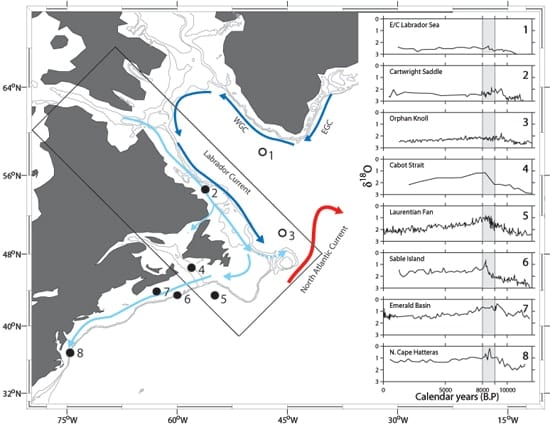Insight into Freshwater Input to the North Atlantic Ocean
December 1, 2005
The strongest climate cooling event in the last 10,000 years occurred about 8,200 years ago. Known as the 8.2 ka event, it was an abrupt release of freshwater to the ocean as the superlake Agassiz drained through Hudson Strait into the Labrador Sea. Numerical modeling studies have suggested that the large volume of freshwater from Lake Agassiz spread over the northern North Atlantic Ocean, forming a fresh, buoyant surface layer that inhibited the normal formation and sinking of dense water that drives the large-scale meridional overturning circulation (MOC) in the ocean. The reduced poleward heat transport due to the weakening of the MOC caused the observed abrupt cooling and associated climate changes. But there are problems with the coarse resolution of previous numerical studies, which suggest the freshwater was added directly to a large area of the northern North Atlantic. New studies by WHOI scientists, using high-resolution numerical calculations, show that the freshwater released from Lake Agassiz just prior to the 8.2 ka event probably did not spread offshore into the northern North Atlantic, but instead formed a narrow buoyant current that flowed southward along the coast. Most of the low salinity water probably did not reach the open ocean until mixing in the slope water system between Newfoundland and Cape Hatteras.
PP12A-06 11:35h The Pathway and Impact of Fresh Water Discharge through Hudson Strait 8200 Years Ago

